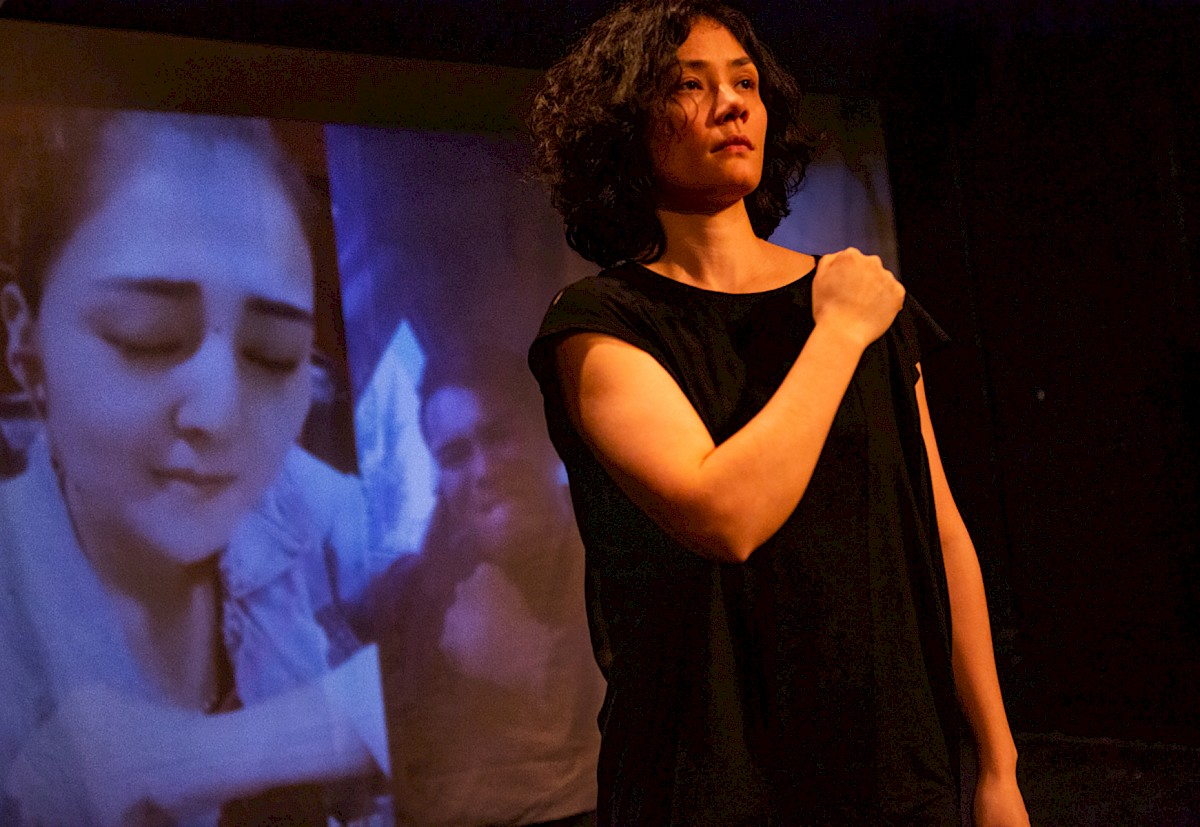Jessica Batke

For 11 years, Jessica Batke has worked as a China analyst and journalist, with a special emphasis on the Uyghur region. She writes, speaks, and has testified before Congress on the topic. Now, she is uniting her expertise with her artistic practice to take a new approach to confronting this crisis. Meanwhile, she is also developing a new musical about America’s legacy in Afghanistan, “Tear a Root from the Earth,” that has similar themes and goals. Several team members on that project -- developed at the Kennedy Center, SXSW, and BRIC Arts Media (Brooklyn) -- are also involved in “Everybody Is Gone.”
Batke’s work as an artist and as a journalist are aimed at the same goal: understanding and furthering the concept of truth. As a journalist, she is always questioning the nature of truth: Who gets to determine what is true? What is “evidence,” and how does one’s identity shape one’s relationship to evidence and fact? What is the role of emotion in defining truth? She asks the same questions in her artistic practice, as a musician and dramaturg. This project is unique in uniting Batke’s artistic and journalistic practices to examine truth in the context of an ongoing humanitarian crisis.
“Everybody Is Gone” unites strategies from journalism, museums, and theater to educate and activate audiences about the Chinese government’s cultural genocide against the Uyghur people and other ethnic Muslims. The government is doing this both by forcibly moving individuals (estimated at least 1 million) to camps and by closely surveilling everyone left behind. Although there is some excellent reporting about what is happening to the Uyghurs, much of it is academic or abstract. The human connection and emotion is not as real to a general audience.
Batke proposes to build an environment that adheres to standards of journalistic excellence while giving audience members a visceral connection to what they are seeing. The team is filling in the gap left by the Chinese government’s largely successful censorship efforts in a way that does not endanger Uyghurs in China or abroad. Thery are, essentially, creating an art installation that is journalism come to life.
The first element of the project is the “Immersive Space,” a recreation of a street scene in Kashgar, a Uyghur-majority city in China. Audiences will be able to explore the space as it changes around them to reflect the government’s increasingly oppressive surveillance and policing policies. The veracity and verifiability of these details is essential to the mission of the project. Audiences will then move on to the Engagement Space, where they can learn more about the facts on the ground in China, hear the voices of Uyghurs themselves, and take steps to voice their opposition to the oppression. The Engagement Space will be the primary area where one can preserve and elevate elements of Uyghur culture -- including dance, art, and crafts -- that are the target of so many eradication efforts. This work is being undertaken hand-in-hand with the Asman Collective, whose mission is the preservation of Uyghur culture.